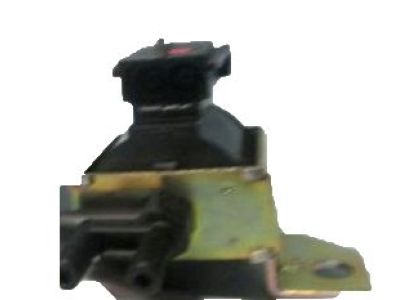My Garage
My Account
Cart
Genuine Pontiac Phoenix EGR Valve
Emissions EGR Valve- Select Vehicle by Model
- Select Vehicle by VIN
Select Vehicle by Model
orMake
Model
Year
Select Vehicle by VIN
For the most accurate results, select vehicle by your VIN (Vehicle Identification Number).
8 EGR Valves found
Pontiac Phoenix Solenoid Asm,EGR Control Valve Relay
Part Number: 1997674$16.21 MSRP: $49.14You Save: $32.93 (68%)Pontiac Phoenix Valve Asm,EGR
Part Number: 17113478$5.68 MSRP: $117.24You Save: $111.56 (96%)Ships in 1-2 Business Days
Pontiac Phoenix EGR Valve
EGR stands for Exhaust Gas Recirculation; the EGR Valve in Pontiac Phoenix regulates the return of the back pressure gases into the chamber to decrease the group of pollutants in the atmosphere. This technique known as Exhaust Gas Recirculation (EGR) assist in lowering nitrogen oxide emission since it recirculates exhaust gas in a bid to reduce combustion temperatures. EGR valves on the Pontiac Phoenix have gone a notch higher from mere orifice jets to engine condition responsive valves. Even though EGR is necessary for emissions and engine optimization, some present engines such as Chrysler Pentastar 3.6 exclude it. It is necessary to note that to avoid the EGR Valve clogging with carbon deposits, EGR systems require periodic maintenance.
Each OEM Pontiac Phoenix EGR Valve we offer is competitively priced and comes with the assurance of the manufacturer's warranty for the part. Furthermore, we guarantee the speedy delivery of your orders right to your doorstep. Our hassle-free return policy is also in place for your peace of mind.
Pontiac Phoenix EGR Valve Parts Questions & Experts Answers
- Q: How Does the Exhaust Gas Recirculation (EGR) System and EGR Valve Work and What Are the Maintenance and Troubleshooting Procedures on Pontiac Phoenix?A: To reduce nitrogen oxide (NOX) emissions, the Exhaust Gas Recirculation (EGR) system recirculates a small amount of exhaust gas into the combustion cycle to lower peak combustion temperatures where NOX is formed. There are exhaust passages in the intake manifold that facilitate efficient removal of exhaust gases. Vacuum hoses and EGR valve checkup are the main maintenance points, with TVS monitoring vacuum signals according to temperature changes in engine. Two types of EGR valves exist: vacuum modulated and exhaust back-pressure modulated, both with different ways of opening the valve. The EGR system is governed by throttle position and engine temperature so as not to allow recirculation at idle, during deceleration or when starting from cold condition for maintaining appropriate air fuel mixture. Rough idle is among the most common problems associated with this system, stalling and poor performance being others these can be solved through diagnosis and replacement of certain parts other than that. Diagnosis will involve; checking EGR valve movement; testing vacuum signal integrity and TVS functionality. Where need be, one can substitute either EGR valve or thermal vacuum switch referring to proper procedures for installation purposes.
- Q: What is the location and common issue with the EGR valve on Pontiac Phoenix?A: The EGA valve is located in the intake manifold beside the carburetor. Most times, a jammed or rusted EGA valve will be the cause of emissions system failure. To verify if it's functional, put your hand below EGA valve when the engine is cold to avoid burns and manually press down on diaphragm. The diaphragm should allow you to perform some modestly exerted up and down movement in its case. If it doesn't move at all or moves with great difficulty replace it with another one of EGA.












